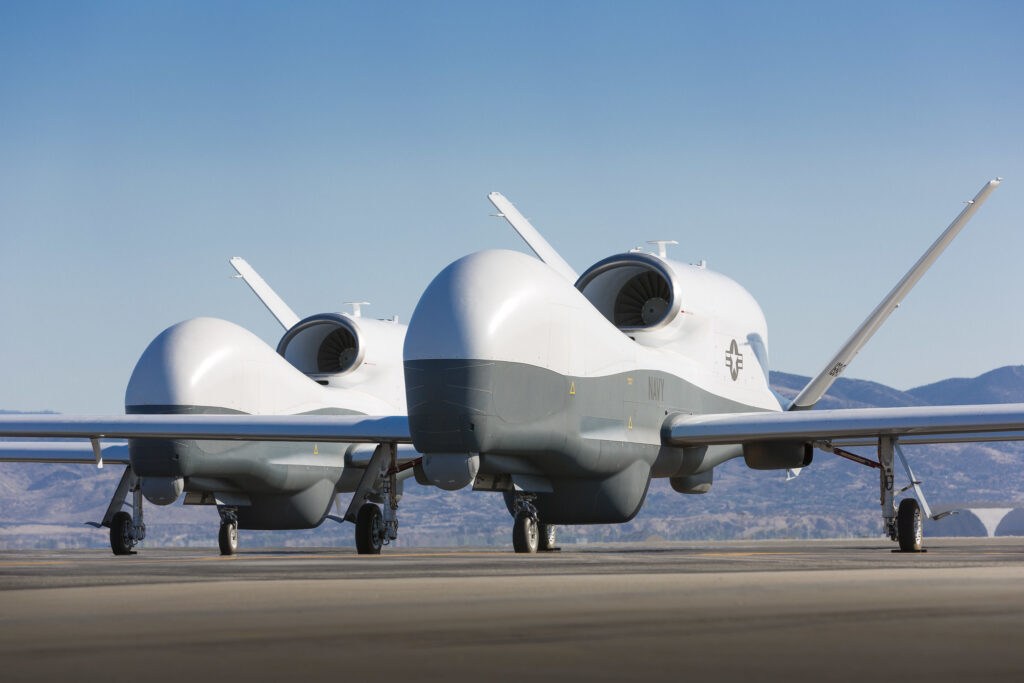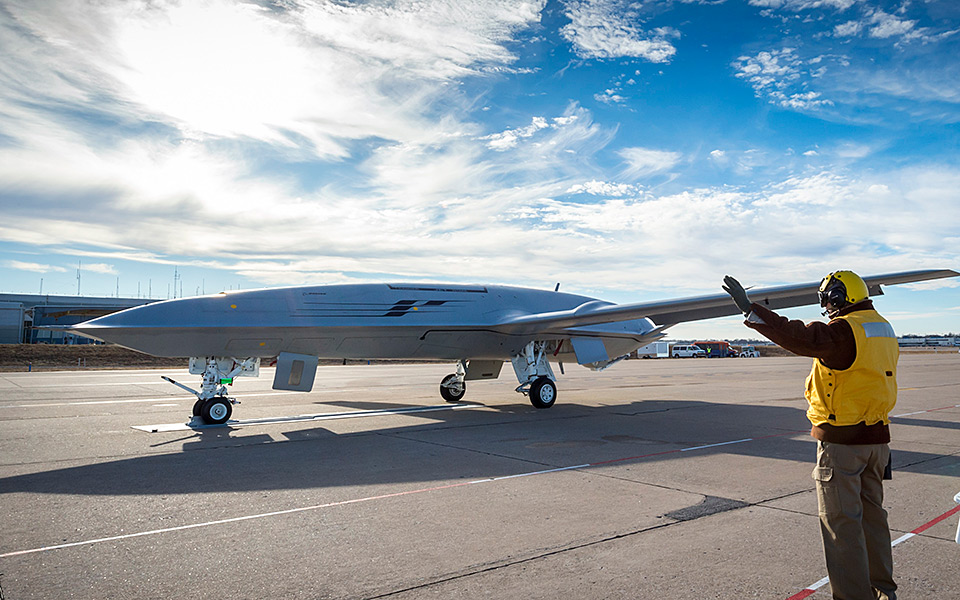EXCLUSIVE Navy’s New Triton Drone Heads To Guam, New Pacific Recon Tool
Posted on

Two MQ-4C Triton drones on the tarmac.
WASHINGTON: The Navy is sending two high-altitude MQ-4C Triton drones to Guam on their first overseas deployment, placing the sophisticated surveillance platform deep within the Indo-Pacific at a time of rising tensions with China and stepped-up Navy patrols through the Taiwan Strait.
A group of sailors from the Navy’s Unmanned Patrol Squadron 19, (VUP 19) the first unit to fly the Triton, left their base in Jacksonville Fla. yesterday for Andersen Air Force Base in Guam to support the 7th Fleet. Photos of the sailors leaving Florida were posted on the unit’s Facebook page.
A defense official confirmed the two drones are heading to Guam for an Early Operational Capability deployment to assess how they will operate alongside US and coalition aircraft. In the coming years, the Navy’s fleet of Tritons are expected to operate at five bases across the globe.
The Northrop Grumman-made Triton, part of the Navy’s Broad Area Maritime Surveillance program, will give the US a powerful new tool capable of staying aloft for over 24 hours at altitudes exceeding 10 miles, while it scans the ocean and landmasses with its 360-degree radar. It also has a multi-spectral targeting system that can transmit high-resolution images to other aircraft and ground stations.
Getting unmanned systems out in front of manned aircraft and ships in the Pacific has emerged as one of the Navy’s highest priorities, as the so-called “Great Wall of SAMS” China has installed on islands in the South China Sea have forced the US and its allies to reconsider how and where to deploy in the region.
The problem has led the new Marine Corps Commandant to launch a soup-to-nuts review of how the Corps deploys in the face of deadly — and precise — standoff threats, and is certain to be a major point of order in the Navy’s new force structure assessment expected to be released later this year. In the meantime, the Navy asked for $3.7 billion to fund a variety of unmanned programs in its 2020 budget request, including $447 million for two large unmanned surface vehicles to conduct everything from long-range surveillance to offensive operations.
In the air, Triton has already demonstrated the ability to feed full-motion video to P-8 surveillance planes and ground stations, giving P-8s vastly more visibility and allowing the sub hunters to concentrate on their primary mission while the Triton uses its high-altitude ISR to scan ahead.
The Triton will also eventually replace the aging P-3C.

Boeing MQ-25 Stingray prototype, an unmanned aerial refueling tanker
The deployment arrives at the same time that the Navy’s MQ-25 Stingray refueling drone has carried out its first successful test flight at a Boeing facility in the United States. The two-hour flight, remotely controlled by Boeing pilots, featured an autonomous taxi and takeoff, while the plane flew a predetermined route. The Navy envisions the Stingray as its carrier-based refueler of the future, a major undertaking designed to take manned aircraft out of the loop on those dangerous missions.
The two Guam-based drones won’t be the only long-endurance platforms working in the region. In 2018, the Australian government signed a deal with Northrop Grumman for six MQ-4C Tritons, slated for delivery between 2023 and 2025. The agreement included money for the Royal Australian Air Force to embark on a co-development program with the US Navy, meaning Australia will receive the same aircraft that US pilots operate. In April, the State Department also approved the sale of four Tritons to Germany for $2.5 billion.
Doug Shaffer, Northrop Grumman’s vice president for the Triton program, said in a statement the “VUP-19’s deployment is a major milestone for the Triton program as we continue to develop and refine the Triton system to meet the U.S. Navy and Australia’s joint requirements for the multi-intelligence configuration.”
In July, Northrop was awarded a $33.8 million contract to start work on adding a signals intelligence-gathering capability to the Triton system, with work scheduled to be completed in 2022.
The drones were initially scheduled to deploy to Guam late last year, but after one crashed during a training flight in California in Sept. 2018, the program was put on hold while an investigation was conducted.
Subscribe to our newsletter
Promotions, new products and sales. Directly to your inbox.
